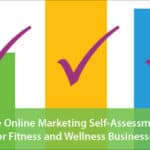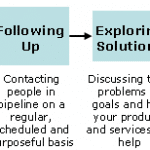Are you using LinkedIn like a power tool, or a blunt-force instrument? Used like a power tool, you’ll put your best professional foot forward.
But if you treat it like a blunt instrument, you’ll undermine your personal wellness brand in front of the world.
Like the person who paid to send me a LinkedIn InMail this week that said:
“We are in the same group together [yes, but that did not mean I wanted you to send me your promotional emails], we may already know each other well personally [probably not, or you wouldn’t be emailing me through LinkedIn]…Watch this quick five-minute [quick?!] video…” and then included links to videos, a “complete overview explanation [apparently, it is both short AND long]” AND testimonials.
Don’t do this. Instead:
DO:
1. Use a professional headshot
This isn’t the time for your high-concept selfie.
2. Update your profile regularly
I suggest creating a calendar tickler for every 3o – 45 days.
3. Post LinkedIn status updates
Absolutely you should humble-brag about your recent promotion. But it’s also useful to comment on relevant industry developments and share your team or company successes. What you’re demonstrating is that you’re energetic and engaged.
4. Personalize your connection requests
The LinkedIn boilerplace (“I’d like to add you to my professional network…”) is lame – plus it’s all about you and what you want. Remember–LinkedIn, first and foremost, is about marketing Brand You. So think like a marketer. What can you say in your introduction that makes you sound like someone that your potential connection would actually like to know?
5. Personalize your LinkedIn URL
The default URL’s just random characters–but you can personalize it to include your name.
6. Write your profile summary in the first person
“I am…” not “Leslie is…”
7. Use the Interests section
Especially valuable if you’re a career-changer or 50+. You can demonstrate that your interest in wellness as a profession isn’t as sudden as it looks by referencing your American Cancer Society board experience, for example. If you’re over 50, mentioning that you finished your first half-marathon this year demonstrates that you’re not that slow, heavy stereotype of the mature worker.
8. Include your social media handles
If you have a blog or post on Twitter, integrate them.
9. Ask trusted colleagues for recommendations
First, recommend them. Then give it a couple of weeks and drop them a note: “Bob, if you felt able to recommend me on LinkedIn I’d really appreciate it. Here’s the link.”
DON’T:
1. Connect then spam
Nothing is more annoying than accepting a connection invite that is promptly followed by an unasked-for marketing pitch.
Actually, one thing IS more annoying – receiving that same pitch week after week.
2. Apologize then spam
I now get several LinkedIn messages a month from LI connections that say:
“Sorry for the mass message. Can you please take a moment and leave me a quick professional rating here:”
Can you imagine anything more insincere? No need to fake being sorry–just don’t send the mass message! Plus, I would never rate someone I haven’t actually done anything with.
And more to the point – it doesn’t work. When I get a message like this from someone who is a self-described “Social Media Authority” I instantly know that they are anything but a social media expert.
Endorsements in LinkedIn actually count. Endorsements at lame “business reputation” sites don’t. These companies are the MerchantsCircle of “business reputation,” which is not a compliment. And the LinkedIn members sending these messages have bought this company’s marketing hook, line and sinker.
3. Set it and forget it
What’s worse than having no LinkedIn profile at all? Creating a bare-bones profile, connecting to two people, and never touching it again. You instantly look digitally clueless.
4. Get sucked into pointless Groups
Some LinkedIn Groups are outstanding–great discussions from true thought leaders in the field. I participated in a thread discussing alternative licensing ideas for MDs earlier this year that involved several high-ups in the healthcare policy world. They respect and are interested in my take, and I respect and am truly interested in theirs.
On the other hand…especially in the health and wellness segment, many LinkedIn groups are just as bad as a comment thread on a dinky Yahoo news article about “Five Surprising Ways To Lose Weight.” These aren’t connections that will in any way help your business, and they want YOU to know about THEM – they don’t particularly care about knowing you.
And of course, skip the spammers’ paradise Groups that are nothing but self-promotional posts.



